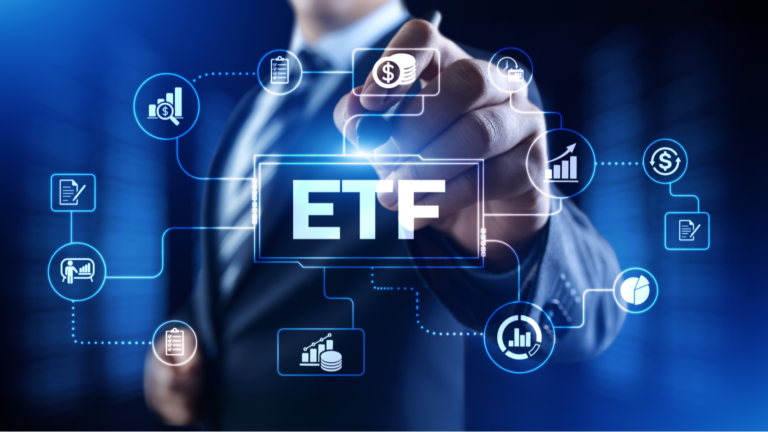Earlier this year, the Visual Capitalist published an infographic highlighting the global growth forecast from the International Monetary Fund (IMF) for various countries worldwide in 2023. If you use country ETFs for tactical asset allocation, I have no doubt you’d be interested in this information.
According to the infographic, Senegal had the highest real (inflation-adjusted) gross domestic product (GDP) projection for 2023 at 8.1%; the second-highest on the list was Niger, at 7.3%. Given the current events in the African country, I’m not sure that will stick. Fortunately, there aren’t any Niger country ETFs that I’m aware of.
Figuring out which emerging and developed markets to choose from is always a bit of guesswork. I’ll recommend at least one emerging and one developed market for this article. For these, the U.S. and Canada will be excluded.
Based on the IMF’s estimates, the three funds I chose are performing well in 2023 and are projected to grow at or near the 2.9% global average.
VanEck Vietnam ETF (VNM)

The IMF predicted Vietnam’s GDP growth in 2023 would be 6.2%, tied with Benin, Cambodia and Togo for the eighth spot on the global list. Representing Vietnam is the VanEck Vietnam ETF (BATS:VNM). As far as I know, it’s the only Vietnam ETF listed on a U.S. exchange.
The ETF got its start in August 2009. Thus far, it has gathered $630 million in net assets, charging shareholders an expense ratio of 0.66%. The ETF tracks the MarketVector Vietnam Local Index’s performance — a collection of companies incorporated in Vietnam.
The VanEck home page points out that the country has a significant demographic advantage over many others: The average age of people in the country is 32, with 58% of working age.
VNM has 48 holdings, with the top 10 accounting for 56% of its net assets. The top three sectors by weight are real estate (27.7%), financials (27.1%), and consumer staples (19.7%). It’s important to note the weighted average market cap is $4.8 billion, which means the ETF holds no large-cap stocks.
VNM is up nearly 24% year-to-date but down 3% over the past year.
iShares MSCI Ireland ETF (EIRL)

As far as I can tell, the IMF’s prediction of 4.0% GDP growth for Ireland in 2023 was the highest of any developed market. The iShares MSCI Ireland ETF (NYSEARCA:EIRL) represents that country.
EIRL has been around since May 2010. The fund has attracted just $102 million in net assets over more than 13 years and tracks the performance of the MSCI All Ireland Capped Index — a collection of companies considered to be based in Ireland.
The exchange fund is a 25/50 capped index, which means no single stock can account for more than 25% of the index, and stocks with a weighting over 5% can’t add up to more than 50%.
Currently, EIRL has 25 holdings, with the top 10 accounting for 81% of its net assets. The top three sectors by weight are basic materials (26.25%), consumer cyclical (30.25%), and industrials (12.96%). The average market cap is $13.9 billion, with large caps accounting for 33% of net assets, while mid-caps and small/micro caps account for 48% and 16%, respectively.
If you like mid-cap stocks, EIRL is for you. It’s up 24% YTD.
iShares MSCI Peru and Global Exposure ETF (EPU)

The second of two emerging/frontier markets is Peru. The IMF predicted the South American country’s GDP growth in 2023 would be 2.6%. While that’s below the 2.9% global average, it’s still much higher than the U.S. at 1.4%.
Representing Peru is the iShares MSCI Peru and Global Exposure ETF (NYSEARCA:EPU), launched in June 2009. It has $115.5 million in net assets, $13.5 million more than EIRL. The fund has an expense ratio of 0.58% — the average for a global emerging market ETF.
EPU tracks the performance of the MSCI All Peru Capped Index, a collection of at least 25 companies and 20 issuers representing the “broad Peru equity universe.” Like EIRL, the index is capped on a 25/50 basis.
The ETF has 25 holdings, with the top 10 accounting for 74% of its net assets. The top three sectors by weight are materials (48.64%), financials (26.49%), and consumer defense (8.24%). The average market cap for the fund is $7.3 billion, with large caps accounting for 55% of the net assets, while mid-caps and small/micro caps account for 22% and 21%.
Except for EPU’s top holding, Southern Copper (NYSE:SCCO), I’m not sure the average investor would recognize many of the other 24 names.
Up nearly 11% YTD and 18% over the past year, the fund is starting to regain some of its losses from its March 2022 high of around $37.
On the date of publication, Will Ashworth did not hold (either directly or indirectly) any positions in the securities mentioned in this article. The opinions expressed in this article are those of the writer, subject to the InvestorPlace.com Publishing Guidelines.
